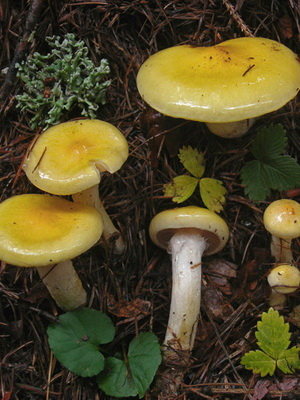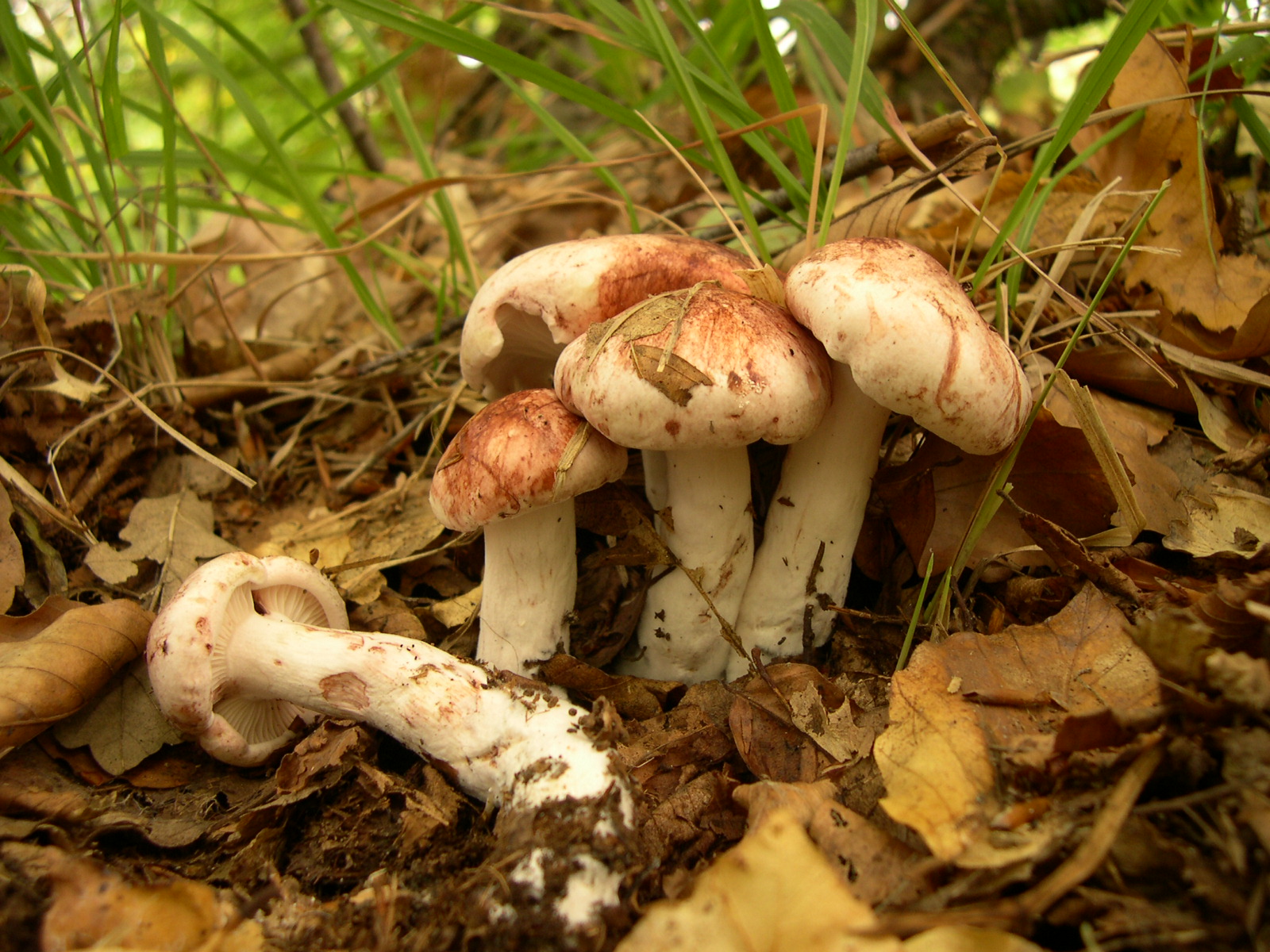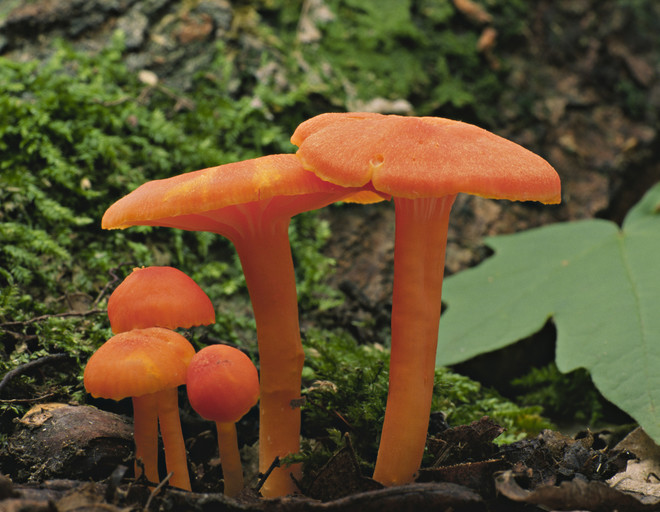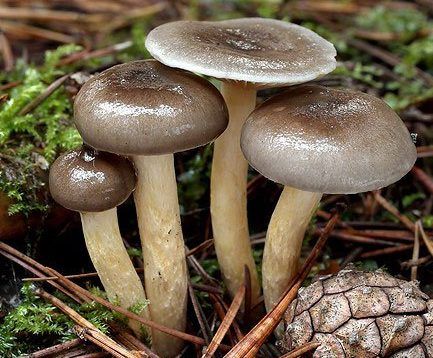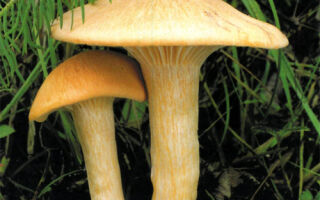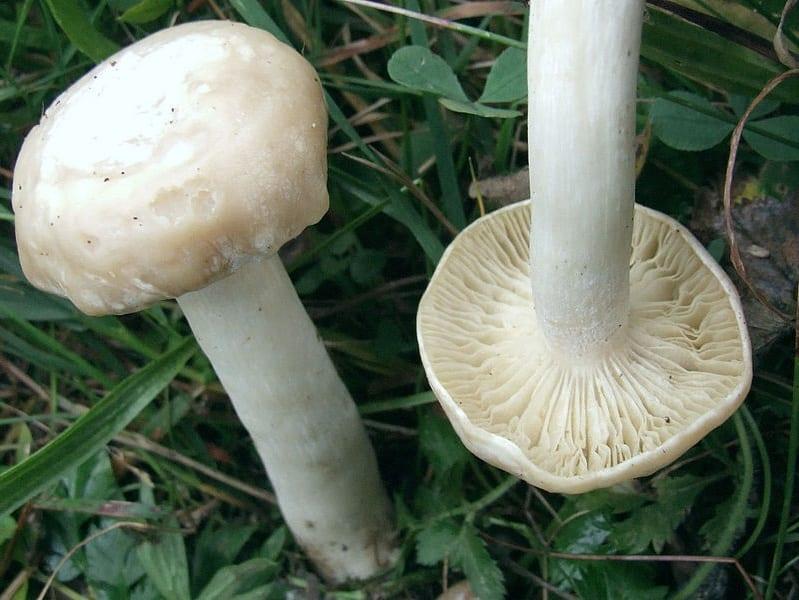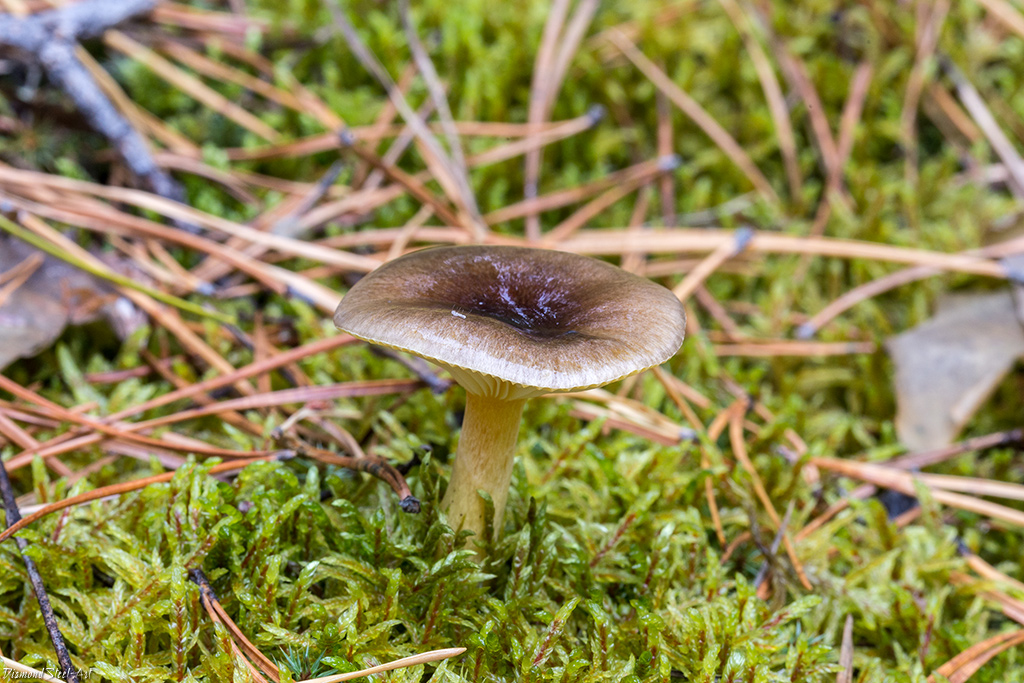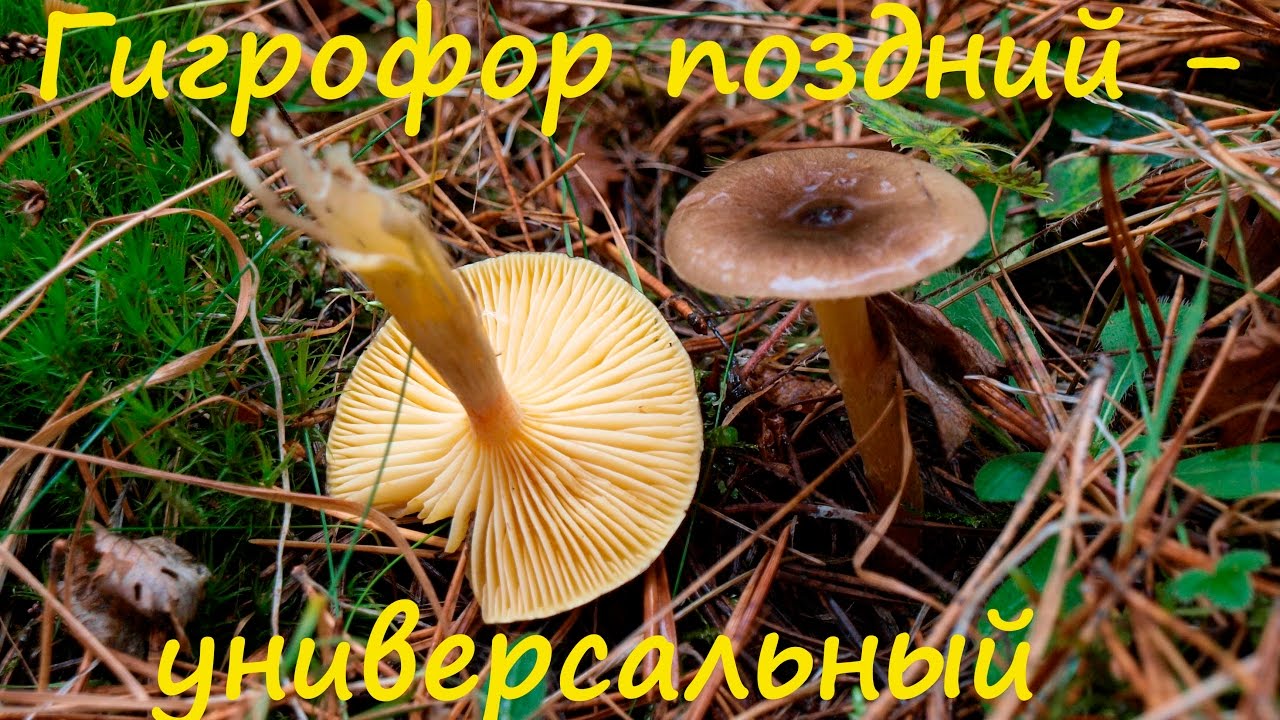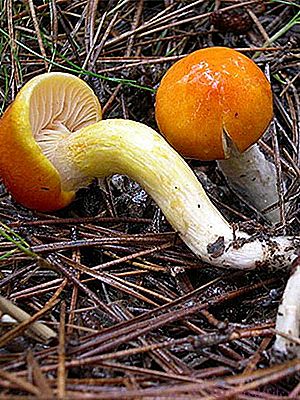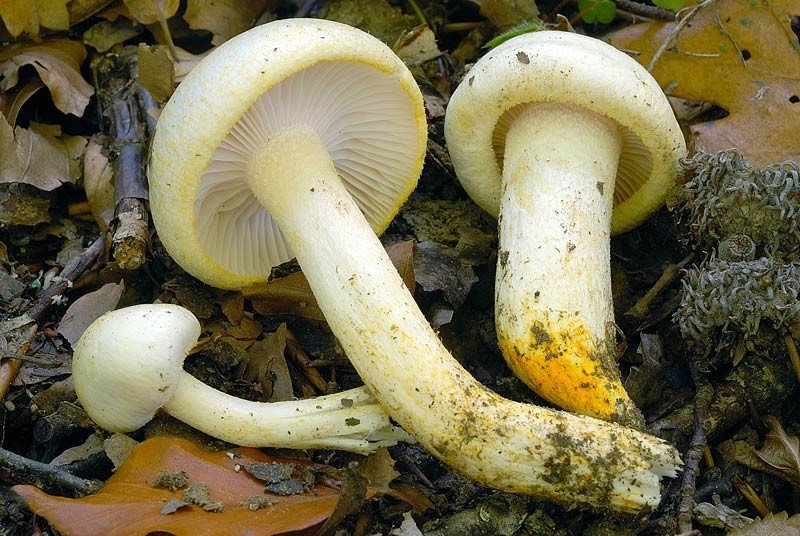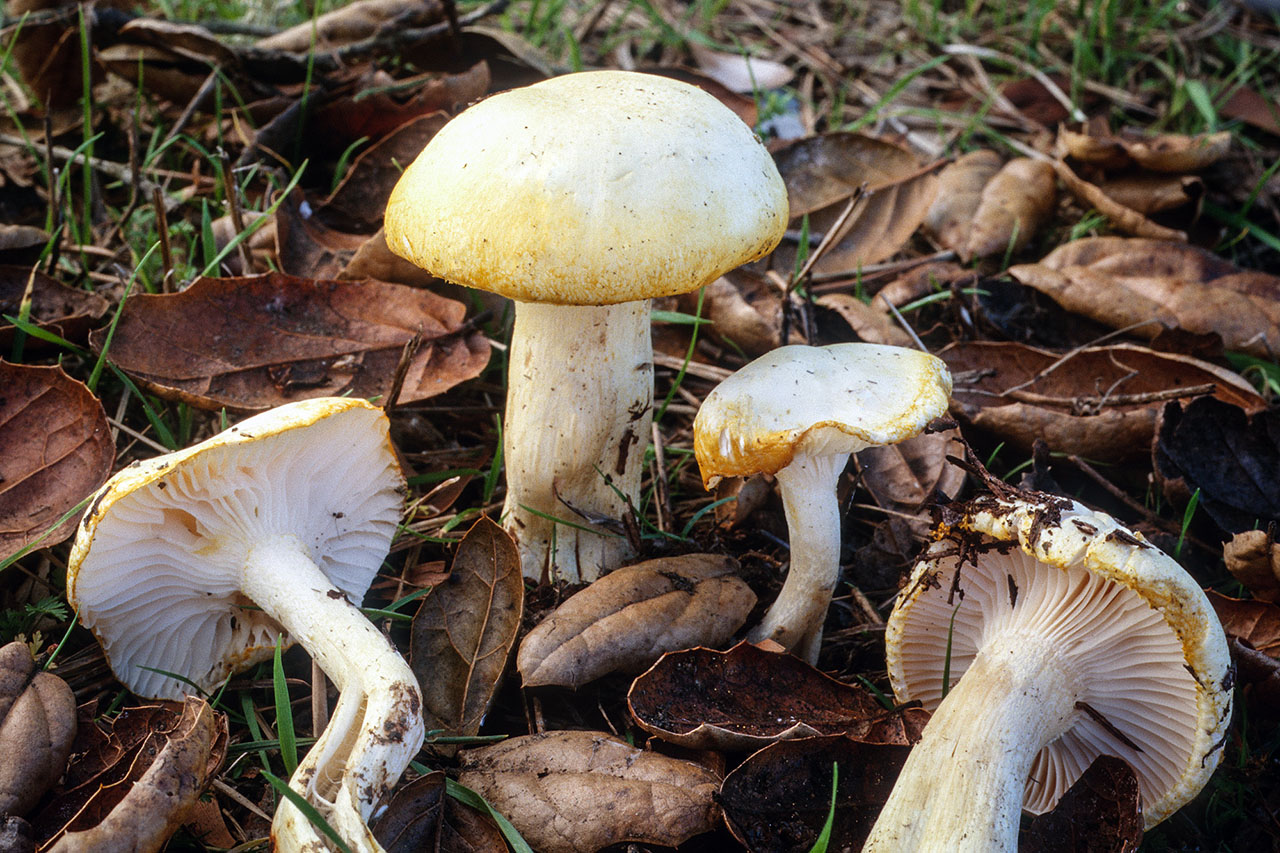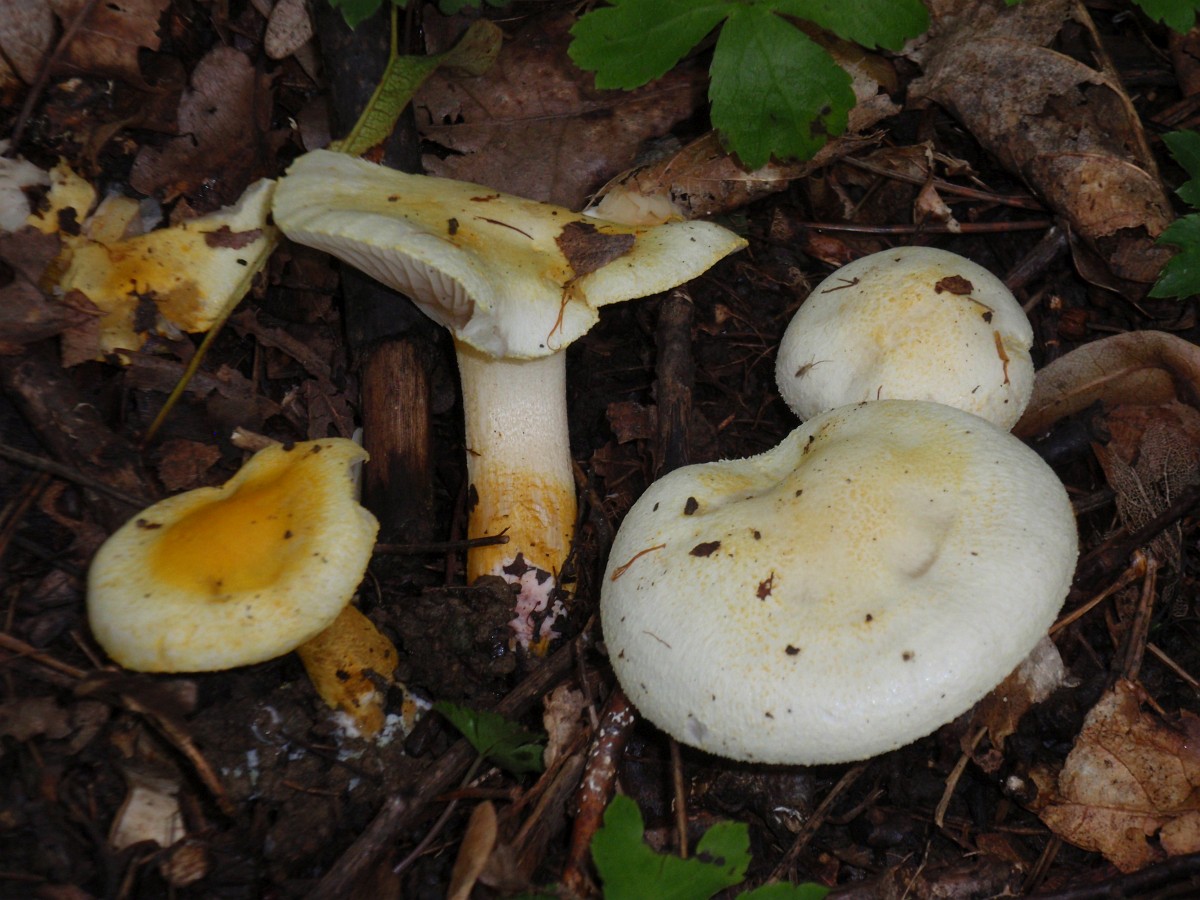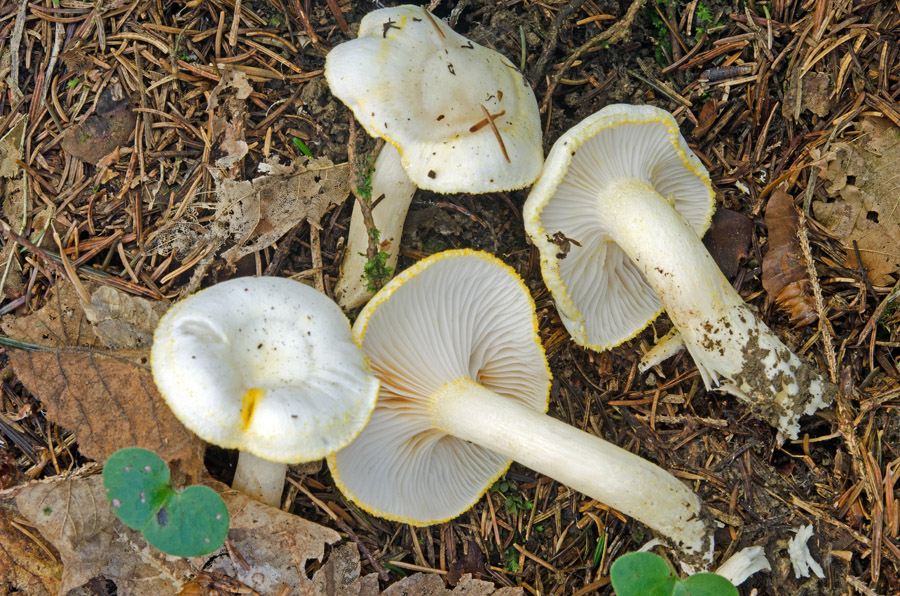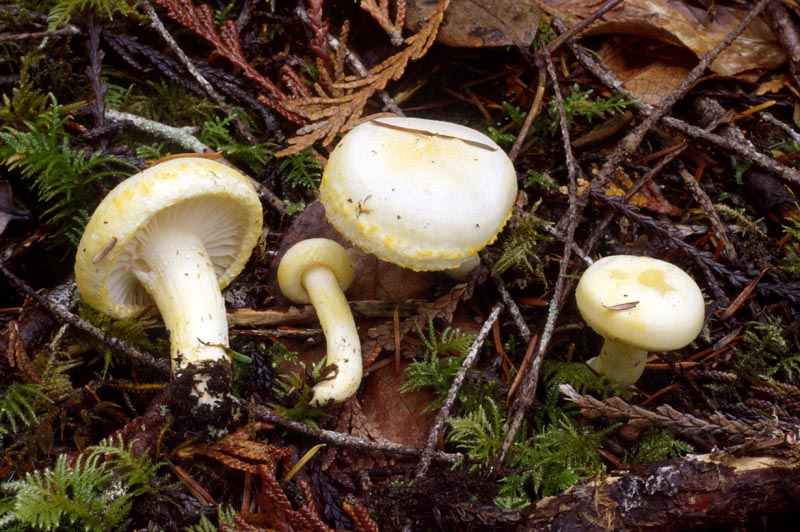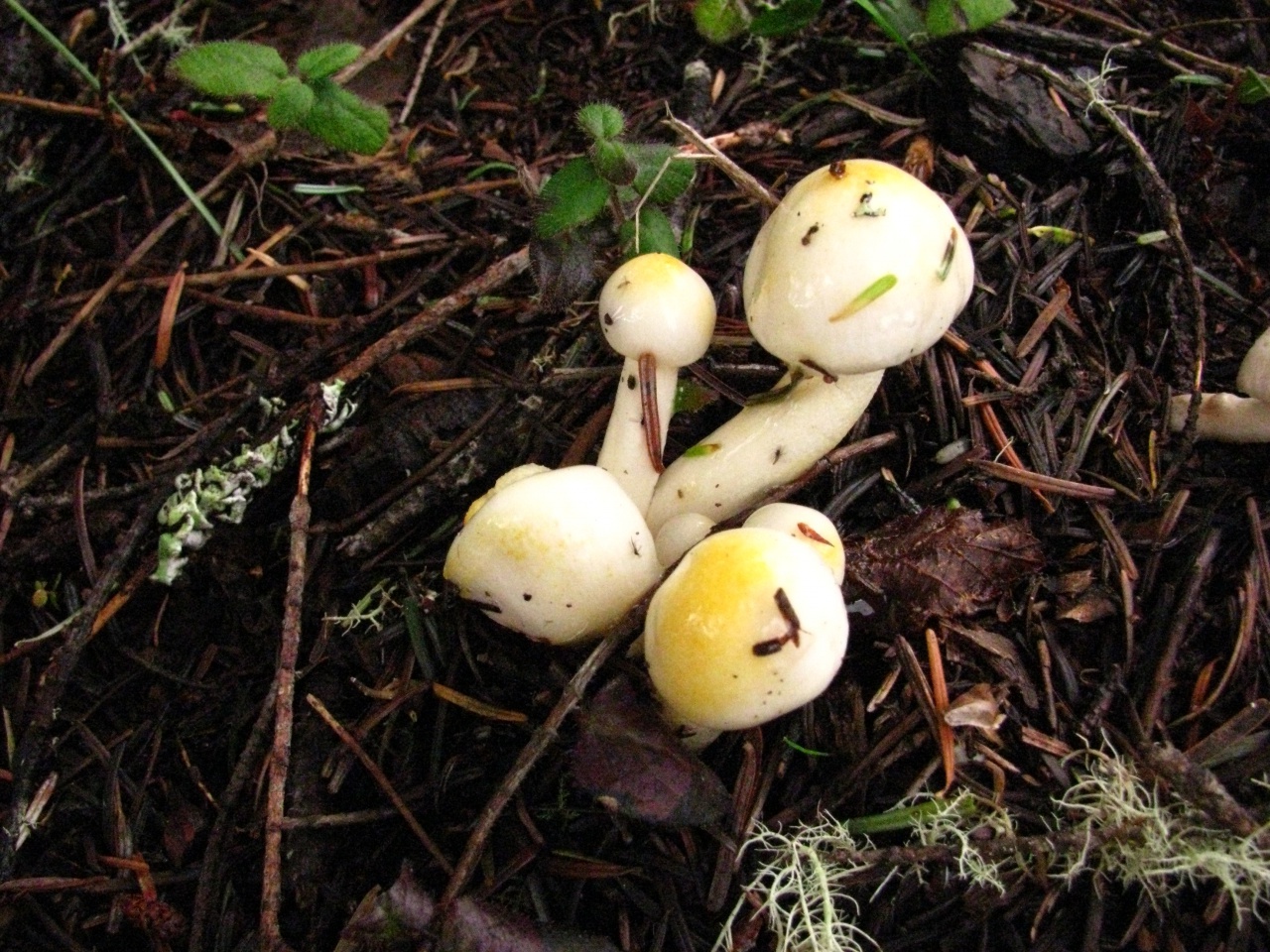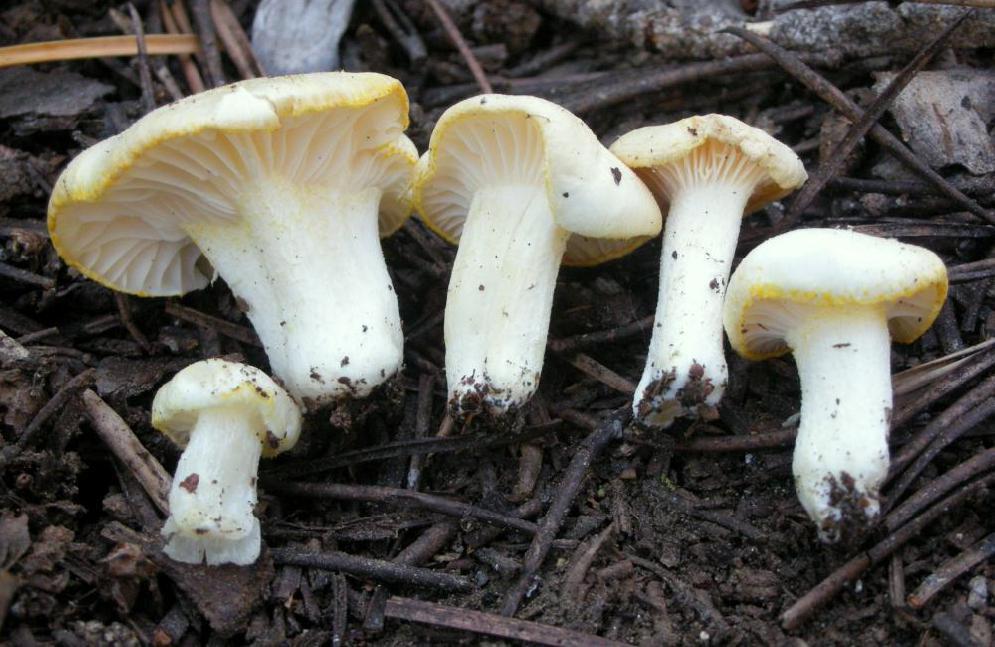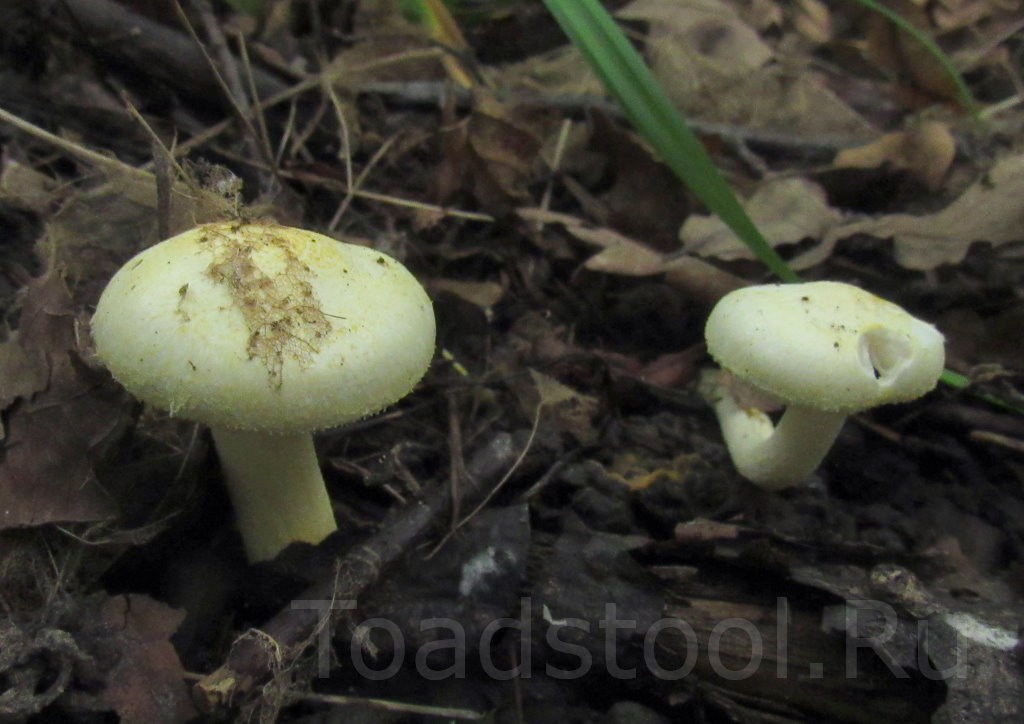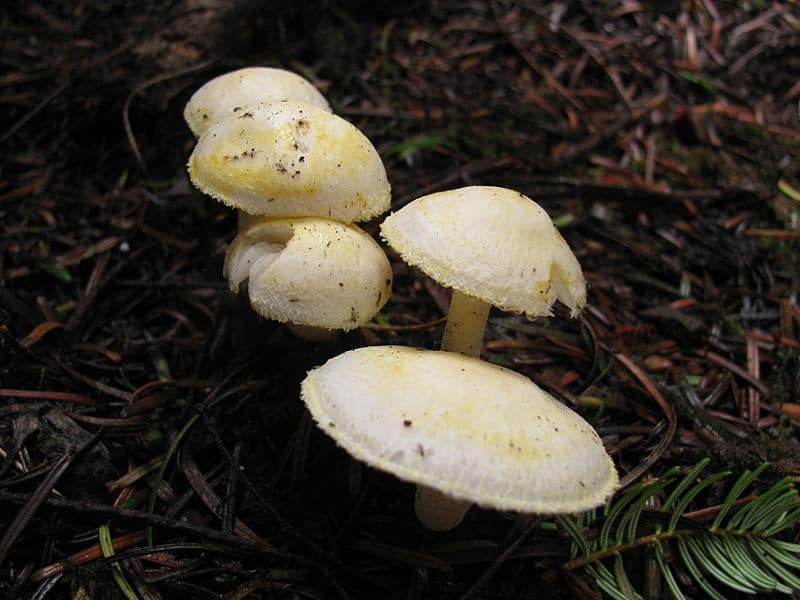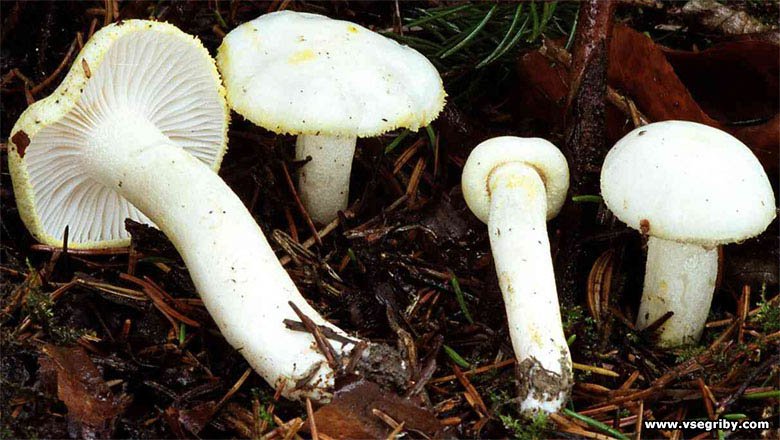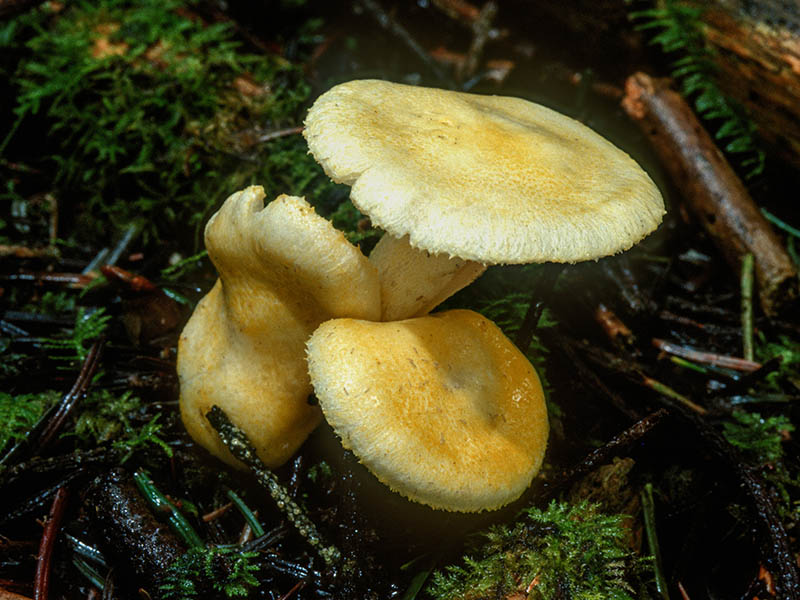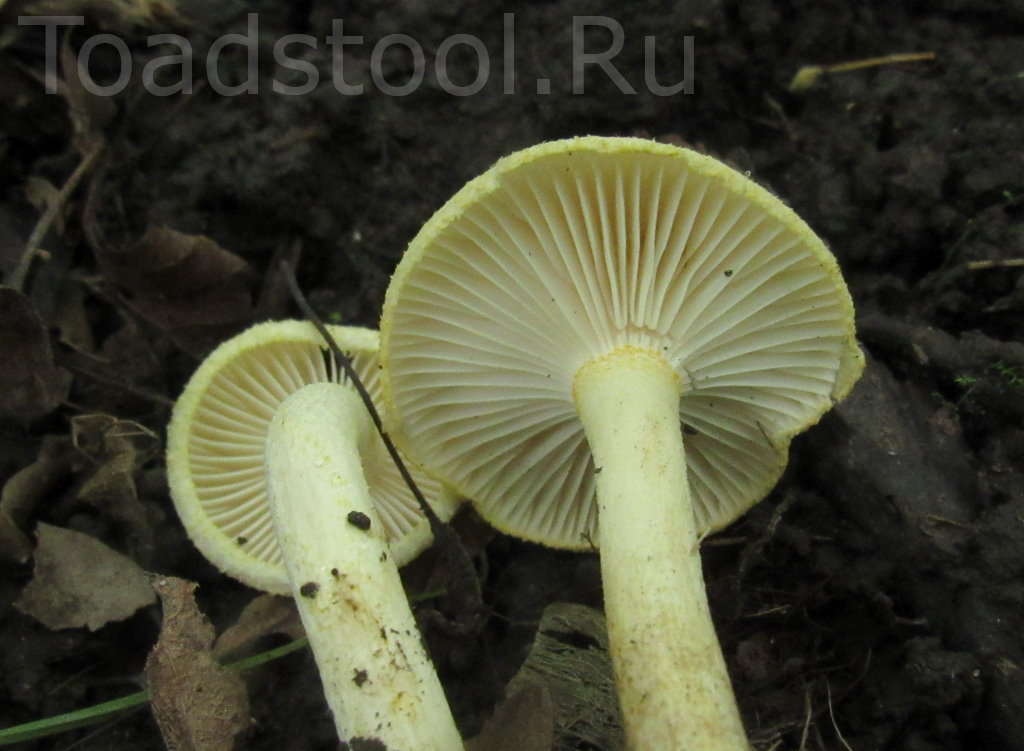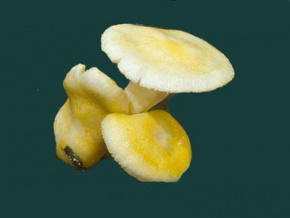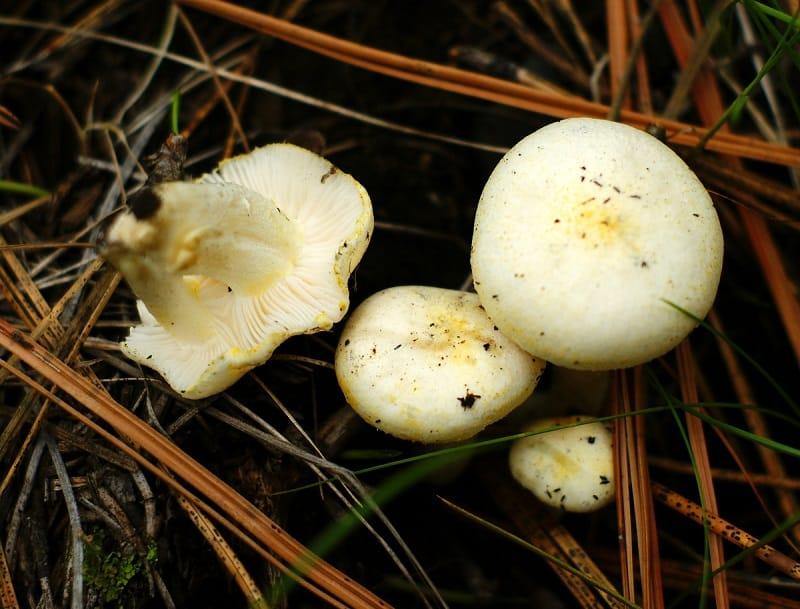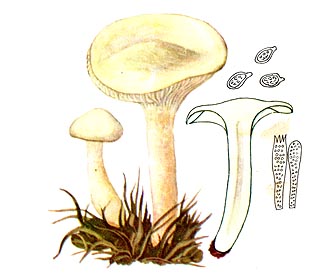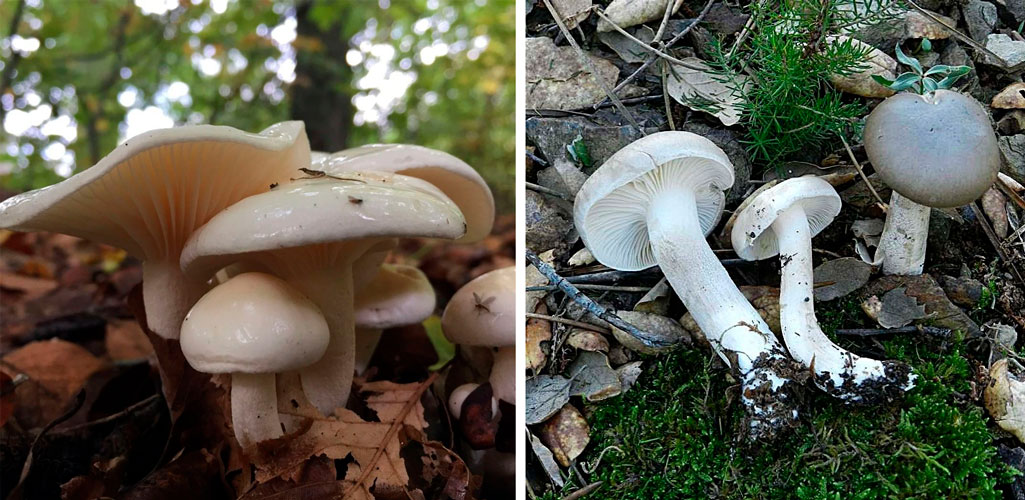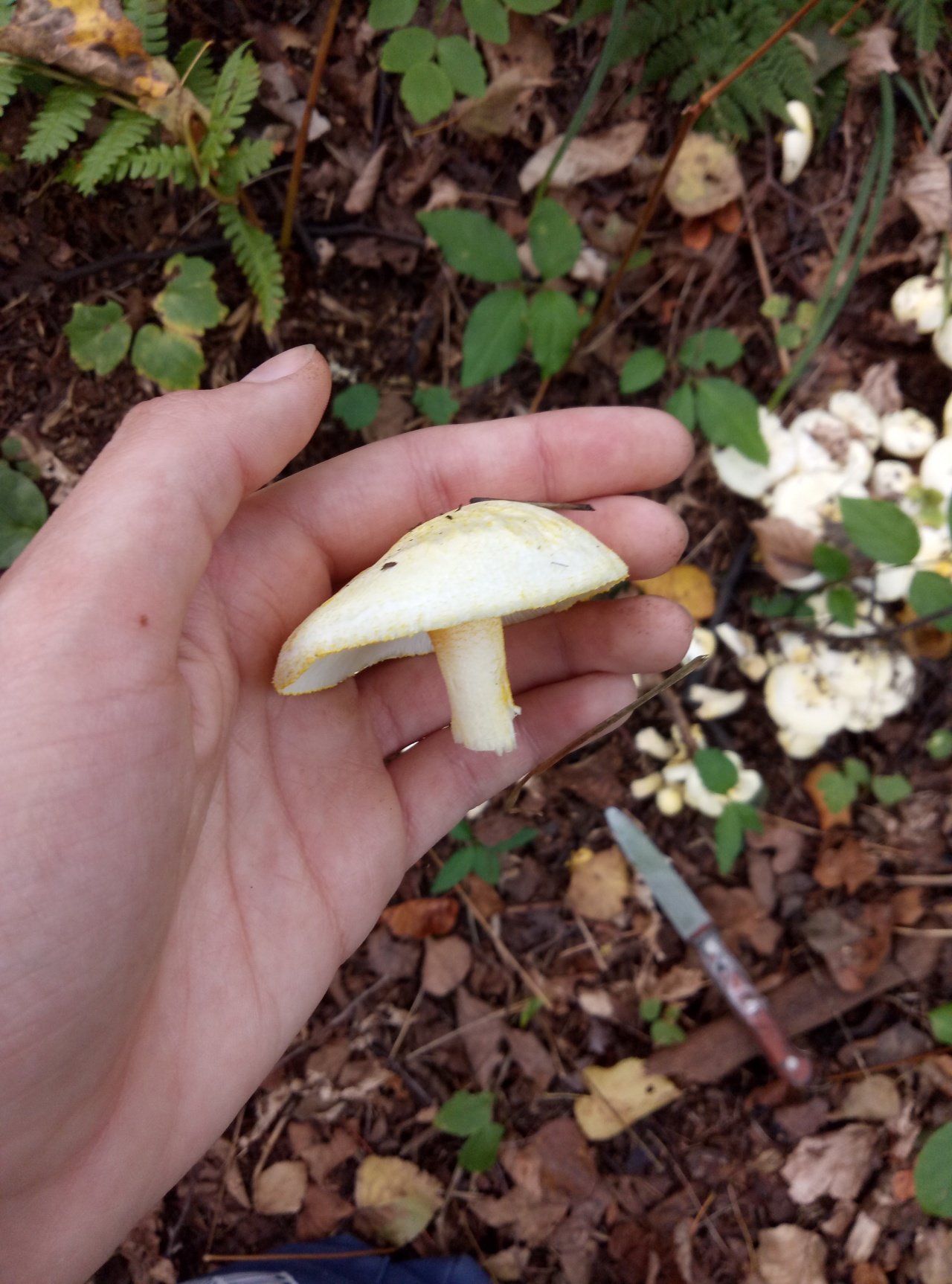Gigrofor golden edibility, where it grows, what it looks like, collection rules, photo
Gigrofor golden: is it possible to eat, description and photo
Golden Gigrofor is a lamellar mushroom of the Gigroforov family. This species grows in small groups, forming mycorrhiza with different trees. In other sources, it can be found under the name of the golden-toothed hygrophor. In scientific circles, it is listed as Hygrophorus chrysodon.
What does the golden hygrophor look like?
The fruiting body of this species is of the classical type. The hat initially has a convex bell-shaped shape with an edge concave downward. As it ripens, it straightens out, but a small tubercle remains in the center. The surface is smooth, sticky, covered with thin scales closer to the edge. In young specimens, the color of the upper part is whitish, but later it becomes golden yellow. The diameter of the cap reaches from 2 to 6 cm.
The pulp is watery, soft. It is characterized by a light shade and does not change when cut. The smell is mild, neutral.
On the reverse side of the cap there are rare wide plates descending to the pedicle. The hymenophore initially has a whitish tint, and then becomes yellow. The golden hygrophor has white elliptical spores with a smooth surface. Their size is 7.5-11 x 3.5-4.5 microns.
The leg is cylindrical, narrowed at the base, sometimes slightly curved. Its length reaches 5-6 cm, and its width is 1-2 cm. In young fruits, it is dense, and then a cavity appears. The surface is sticky, white, with a light fluff closer to the cap and yellow scales along the entire length.
Where does the golden hygrophor grow
This mushroom is common, but it grows singly or in small groups. Prefers conifers and deciduous forests with humus-rich soil. Forms mycorrhiza with oak, linden, pine. The fruiting period begins in mid-August and continues through the second decade of October inclusive.
The golden hygrophor is widespread in Europe and North America. On the territory of Russia, it is found everywhere.
Is it possible to eat a golden hygrophor
This mushroom is considered edible. But it does not possess high taste, therefore it belongs to the fourth category.
False doubles
At the initial stage of development, the gigrofor is golden in many ways similar to its relatives. Therefore, in order to avoid error, it is necessary to study the characteristic differences of twins.
- Fragrant gigrofor. It has a pronounced almond scent, and in rainy weather it can spread for several meters around. You can also distinguish it by the gray-yellow shade of the hat. This mushroom is considered conditionally edible and is characterized by a sweetish pulp taste. The official name is Hygrophorus agathosmus.
- Gigrofor is yellowish-white. The fruiting body is medium in size. The main color is white. A distinctive feature is that when rubbed, wax is felt on the fingers. The mushroom is edible, its official name is Hygrophorus eburneus.
Collection rules and use
Mushroom picking should be done with a sharp knife, cutting off the fruiting body at the base. This will prevent damage to the mycelium.
Before use, forest fruits must be cleaned of litter and soil particles. Then rinse the mushrooms thoroughly. It can be consumed fresh and processed.
Conclusion
Gigrofor golden belongs to the category of unpopular, but edible mushrooms. This is due to its poor fruiting, which makes harvesting difficult, and its neutral taste. Therefore, most mushroom pickers bypass it. Since during the fruiting period, more valuable species can be harvested.
Spotted hygrophorus (Hygrophorus pustulatus)
Other names:
Spotted hygrophoric cap:
2-5 cm in diameter, in young mushrooms it is convex, later prostrate, usually with a tucked edge, slightly concave in the center. The surface of the grayish cap (lighter at the edges than in the center) is densely covered with small scales.In wet weather, the surface of the cap becomes slimy, the scales are not so noticeable, which can make the mushroom as a whole look lighter. The flesh of the cap is white, thin, fragile, without any special smell or taste.
Plates:
Rare, deeply descending on the peduncle, white.
Spore powder:
White.
Spotted hygrophoric stem:
Height - 4-8 cm, thickness - about 0.5 cm, white, covered with noticeable dark scales, which in itself is a good distinguishing feature of the spotted hygrophor. The flesh of the leg is fibrous, not as fragile as in the cap.
Spreading:
Gigroforus spotted occurs from mid-September to late October in coniferous or mixed forests, forming mycorrhiza with spruce; in good seasons it bears fruit in very large groups, although the general inconspicuousness does not allow this worthy hygrophor to gain fame.
Similar species:
Wrong formulation of the question. There are a lot of hygrophors, similar to each other, like two drops of water. The value of Hygrophorus pustulatus is that it is different. In particular, noticeable pimply scales on the stem and cap, as well as large-scale fruiting.
Edible: Edible, like the vast majority of hygrophors; however, it is difficult to say exactly how much. It is considered a little-known edible mushroom with a delicate sweetish taste; it is used fresh (boiling for about 5 minutes), in soups and main dishes.
Remarks
The hygrophors themselves are very interesting mushrooms, with their own inner meaning. Just like Lao Tzu said that a noble man should be like a crooked dry tree growing the devil knows where (so that no one cares about him), so hygrophors are small nondescript mushrooms growing on poor soils, forming mycorrhiza with poor grasses and timid trees, they do not pretend to anything special, but they stand firmly on their feet. The same spotted hygrophor, for example, could compete in popularity with some kind of honey fungus and chanterelle. However, he does not argue. He doesn't need to be collected. He lives in harmony with his surroundings, somehow avoiding greedy human attention, and not even hiding (hiding, as we know from the example of a truffle, does not help either), but just somehow. True Tao cannot be expressed in words, but it can be expressed by mushrooms. It's all.
Description of the fragrant hygrophor.
The cap of the fragrant hygrophor is at first convex, but later transforms into a prostrate one, with a central tubercle. Its diameter is 3-7 centimeters. The cap is covered with a smooth, slimy skin. The color of the cap is grayish, yellow-gray or olive-gray. The edges of the cap are distinguished by a lighter shade; they remain wrapped inward for a long time.
There are thick and soft plates under the head. The shape of the plates can be forked. In young specimens, the plates are adherent, and in old ones they descend to the leg. At a young age, the color of the plates is whitish, and later it changes to a dirty gray. Spore powder is white.
The stem of the fragrant hygrophor is cylindrical, thickened in the lower part, sometimes flattened. Its height reaches 7 centimeters, and the girth is about 1 centimeter. The color of the leg is grayish or brown-gray. The surface of the leg is covered with small flakes resembling flakes.
The flesh of this mushroom is soft, in wet weather it becomes watery and loose. The color of the pulp is white. The pulp has a distinct almond aroma, and it tastes sweet. After the rain, a group of fragrant hygrophors emits an aroma so strong that it spreads for several meters. It is due to its smell that the fragrant hygrophor differs from other members of the family.
Places of growth of fragrant hygrophors.
Fragrant hygrophors grow in spruce forests, they can be found in damp and mossy places. These mushrooms prefer mountainous areas. Fragrant hygrophors bear fruit from summer to autumn.
Evaluation of the edibility of a fragrant hygrophor.
This type of mushroom is practically unknown, but it is suitable for eating fresh, salted and pickled.
During the preparation of fragrant hygrophors, it is necessary to remove the mucous skin, since it has an unpleasant taste and can ruin the dish. Despite this, the scented hygrophors are tender, fleshy and tasty.
Fragrant gigrofor
Family: Hygrophoraceae.
Synonyms: fragrant hygrophor, fragrant hygrophor, gray hygrophor.
Description. The cap is 4-10 cm in diameter, convex, then flat, often with a flat tubercle or depressed, smooth, slimy or slightly sticky, gray, yellowish-gray, sometimes with an olive tint, lighter along the edge (to whitish), sometimes off-white. The plates are rare, thick, white, grayish with age. The pulp is white or grayish, with a strong smell of almonds or anise (or a combination thereof), with an expressionless taste. Stem 5-15 X 0.6-2 cm, cylindrical or narrowed towards the base, dry or wet, with pubescence, mealy-granular bloom or small yellowish scales, at first white, grayish with age.
Fragrant gigrofor is found in coniferous and mixed forests, on calcareous soils, often among mosses, throughout the forest zone of Russia, not often and not abundantly, it forms mycorrhiza with spruce.
Fruiting in August-October.
Similar species. The combination of characteristic odor (anise-almond) and color does not allow this hygrophor to be confused with its other relatives.
Medicinal properties. Studies on antioxidant activity have shown the presence of at least five organic acids: oxalic, citric, malic, quinic and fumaric. In tests for antimicrobial activity, the fungus showed inhibition of the growth of a wide range of bacteria pathogenic for humans: Escherichia coli, Enterobacter aerogenes, Salmonella typhimurium, Pseudomonas aeruginosa, Staphylococcus aureus, S. epidermidis and Bacillus subtilis. Antifungal activity has been shown against the yeast pathogens Candida albicans and Saccharomyces cerevisiae.
Cooking use. An edible mushroom with low palatability, it is eaten fresh, pickled and salted.

